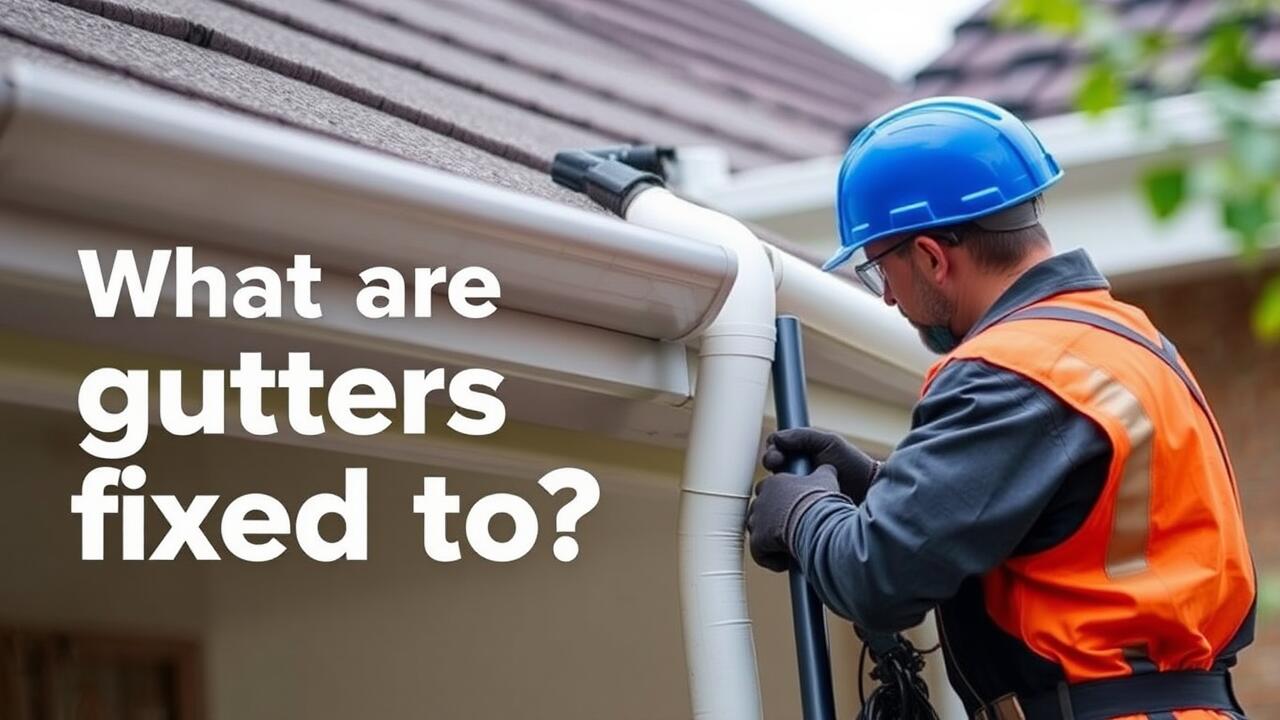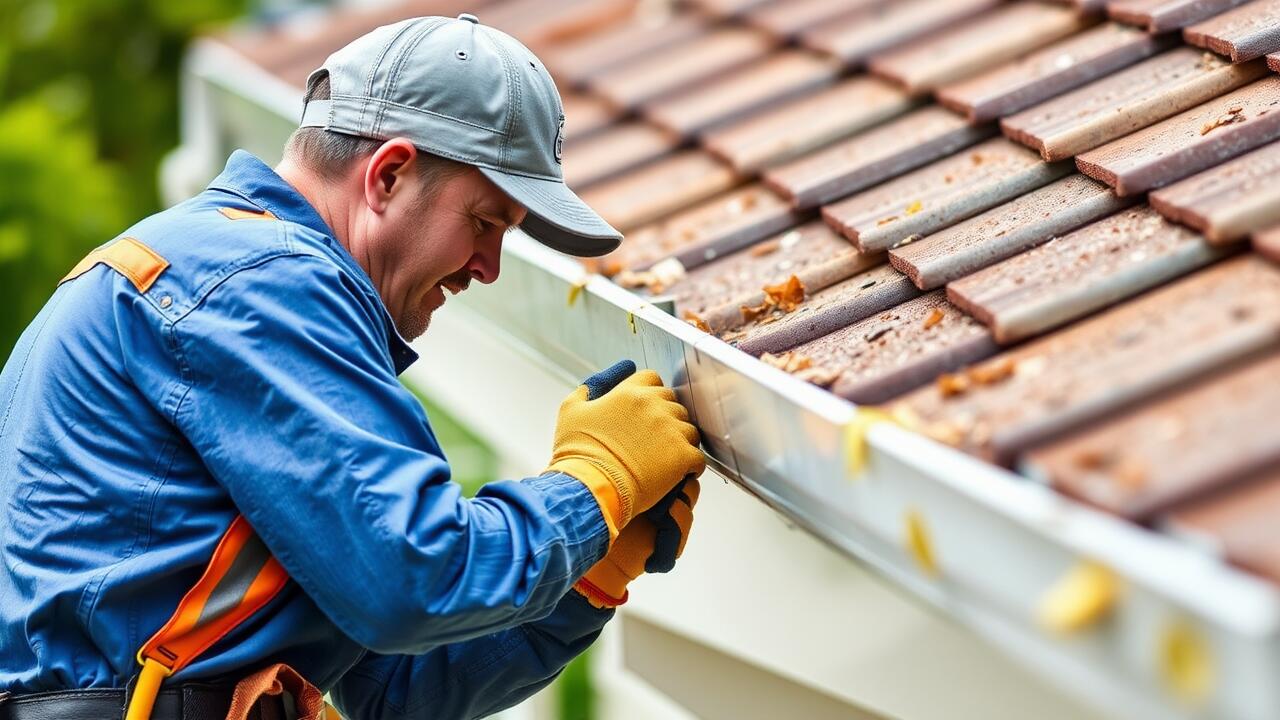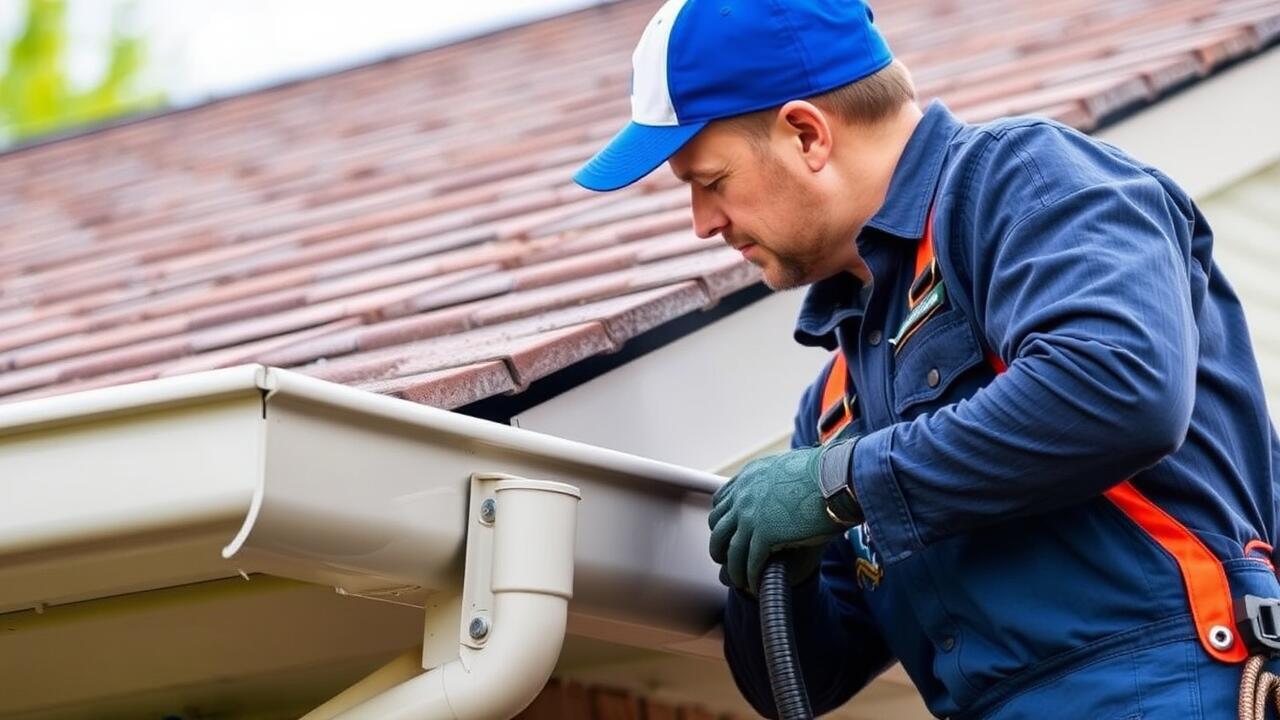
Gutter Pitch and Functionality
The pitch of a gutter system influences how effectively it channels rainwater away from a structure. Ideally, a gutter should slope slightly toward the downspouts. This design ensures that water flows freely, minimizing the risk of pooling and potential damage to the roof and foundation. Inadequate pitch can lead to overflowing gutters, exacerbating drainage issues and causing water to seep into unwanted areas.
Regularly assessing gutter pitch is crucial for maintaining functionality. If a homeowner notices signs of water overflow or stagnant water within the gutters, adjustments may be necessary. Professional services for gutter repair in Lake City, Seattle, can address these issues by either realigning the gutters to establish the correct slope or replacing parts that no longer function properly. Beyond immediate repairs, understanding gutter pitch plays a vital role in preventing long-term structural damage.
Significance of Proper Angling
The angle at which gutters are installed plays a critical role in their effectiveness. A proper pitch ensures that rainwater flows smoothly toward the downspouts. If the gutters are too flat, standing water can accumulate, leading to rust, mold growth, and even structural damage. Conversely, if they are angled too steeply, water may spill over the sides, defeating the purpose of the gutter system. Ensuring the right angle is essential for long-term functional performance.
Homeowners in need of gutter services should consider seeking professional assistance for the best results. In Lake City, Seattle, expert gutter repair services can diagnose issues related to poor angling or pitch. These professionals can make adjustments or repairs to enhance the gutter's functionality. By addressing the significance of proper angling early, homeowners can avoid more significant problems and expensive repairs down the line.
Common Gutter Issues
Gutters often face various issues that can compromise their effectiveness. One common problem is clogging, which occurs when debris such as leaves, twigs, and dirt accumulate within the gutter. This blockage can lead to water overflow, damaging the roof and siding of a home. Proper installation can help mitigate this issue, but regular cleaning is essential to ensure that the gutters remain free-flowing.
Another frequent issue is the deterioration of the gutter system over time. Rust, corrosion, and wear can lead to leaks, making it crucial to regularly inspect gutters for signs of damage. Homeowners in need of assistance with these issues often seek professional help for thorough inspection and repairs. For those in the area, services like Gutter Repair Greenwood, Seattle, can provide the necessary expertise to keep gutters in optimal condition.
Identifying and Addressing Problems
Gutters serve an essential role in directing water away from a building's foundation, but various issues can compromise this functionality. Homeowners should routinely inspect their gutters for signs of wear, such as sagging sections, rust, or blockages from leaves and debris. Water overflow during rainfall can indicate a clogged system that needs immediate attention. Not addressing these problems can lead to significant damage to both the gutters and the structure itself.
When problems are identified, professional assistance may be required to ensure proper repairs. Gutter Repair Central District, Seattle, offers expert services that help alleviate common issues, such as improper pitch and leaks. Investing in timely repairs not only extends the lifespan of the gutter system but also protects the home from potential water damage. Regular maintenance and prompt action are crucial in preserving the effectiveness of gutters.
Maintenance of Gutter Systems
Regular maintenance of gutter systems is essential for preventing costly damage to your home. Clogged gutters can lead to water overflow, which may cause issues like mold growth, wood rot, and even foundation damage. To avoid these problems, homeowners should inspect their gutters at least twice a year, especially after heavy rainfall or storms. Cleaning out leaves, debris, and any obstructions helps ensure that the water flows freely and directs it away from the house.
In addition to routine cleaning, it's important to check for any signs of wear or damage. Look for rust spots, holes, and loose connections that may need repair. If you encounter serious issues, professional services like Gutter Repair Greenwood, Seattle, can provide efficient solutions. By addressing small problems promptly, homeowners can extend the lifespan of their gutters and avoid more significant repairs down the line.
Best Practices for Upkeep
Regular inspection of your gutters is crucial for maintaining their functionality. Check for any signs of blockage, such as leaves or debris, which can impede water flow. Clearing the gutters at least twice a year helps prevent overflow and water damage to your home’s foundation. Additionally, monitoring for leaks or rust spots can allow you to catch issues before they escalate.
When faced with significant damage, seeking professional help is essential. Companies specializing in gutter maintenance, like Gutter Repair Greenwood, Seattle, can provide expert services to ensure your system is in optimal condition. They can address any repairs needed while also offering advice on additional protective measures, such as gutter guards, which can further enhance the longevity of your system.
FAQS
What are gutters typically fixed to?
Gutters are usually fixed to the fascia board of a roof structure, which is the horizontal board that runs along the edge of the roof.
Why is the angle of gutters important?
The angle, or pitch, of gutters is important because it ensures that water flows toward the downspouts, preventing overflow and water damage to the roof and foundation.
What common issues can arise with gutters?
Common gutter issues include clogs from leaves and debris, sagging or misalignment, leaks, and rust or corrosion over time.
How can I identify problems with my gutters?
You can identify gutter problems by looking for signs such as water overflowing from the gutters, sagging sections, leaks, or water pooling near the foundation of your home.
What are some best practices for maintaining gutters?
Best practices for gutter maintenance include regular cleaning to remove debris, checking for proper pitch, inspecting for leaks or damage, and ensuring downspouts are directing water away from the foundation.



